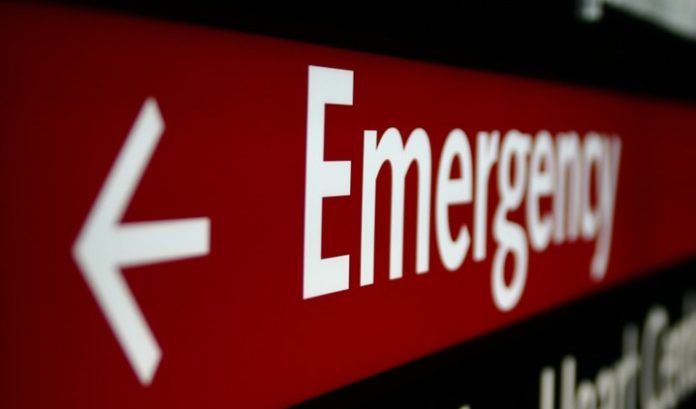
Researchers from Rhode Island and The Miriam hospitals and the Stanford University School of Medicine have found that prescription opioids, including methadone, were involved in 67.8 percent of nationwide emergency department (ED) visits in 2010, with the highest proportion of opioid overdoses occurring in the South. In total, opioid overdoses accounted for more than 135,971 visits to U.S. emergency rooms that year.
Additionally, several concurrent health conditions were identified as common among overdose victims. These include chronic respiratory diseases and mental health/mood disorders, suggesting that opioids should be prescribed with particular caution to patients with pre-existing medical conditions. The study and its findings have been published online in JAMA Internal Medicine.
“Opioid overdose takes a significant toll on the health care system in the United States, both in terms of finances and resources,” says Traci Green, Ph.D., M.Sc., an epidemiologist at the Department of Emergency Medicine at Rhode Island Hospital and a senior researcher on the study. “To date, there have been minimal studies and related national data about opioid overdoses in emergency departments.”
According to the Centers for Disease Control and Prevention, deaths from drug overdose have been rising steadily over the past two decades. Every day in the U.S., 114 people die due to drug overdose. Opioid overdose, which includes medications such as oxycodone, hydrocodone and methadone, is the leading cause of accidental death for adults in the U.S.
Safe, quick access to EMS saves lives
Dr. Green, who is also affiliated with the Rhode Island Hospital Injury Prevention Center and The Center for Prisoner Health and Human Rights (CPHH) at The Miriam Hospital, and Josiah Rich, M.D., MPH, director of CPHH, are credited with spearheading a Rhode Island “collaborative practice agreement” allowing anyone to walk into a Rhode Island Walgreens or CVS and obtain naloxone — a powerful anti-overdose drug (also known as Narcan) — and training on how to use it.
The Miriam also recently joined with Rhode Island and Newport hospitals to launch a program to help combat the opioid overdose epidemic, including emergency department-based overdose prevention and response education and distribution of intra-nasal naloxone rescue kits to overdose patients and their families.
In this latest study, led by Michael Yokell, Sc.B., of the Stanford University School of Medicine and formerly a researcher at The Miriam Hospital, the researchers found that the number of ED visits resulting in death was highest for overdoses involving multiple opioids. It was lowest for prescription opioids. Overall, the death rate was less than 2 percent for patients who made it to the emergency department, highlighting the need to ensure safe access to emergency medical services (EMS) for overdose victims.
One approach to increase EMS utilization for overdose victims is the adoption of Good Samaritan Laws, which allow limited legal protection for drug-related charges when an overdose victim or witness calls 911 during an overdose. One such measure, The Good Samaritan Overdose Prevention Act, became law in Rhode Island in 2012.
Although naloxone has been shown to save lives when it’s made available, its use has been limited mostly to medical professionals at hospitals and emergency rooms as well as a growing number of police officers and other emergency responders. However, the U.S. Food and Drug Administration recently approved a new, portable naloxone delivery system that can be used by people without medical training in emergency situations. The device is small enough to be carried in a pocket and is intended for use by family members and/or caregivers of opioid users.
“Our research indicated that there are high rates of several comorbidities among patients who overdosed,” Green says. “This suggests that opioid analgesic prescriptions for patients with comorbidities should be handled with care, and health care providers should counsel all their patients about overdose risks.
Risky prescribing patterns
“Further,” Green adds, “acute benzodiazepine intoxication was recorded in 22.2 percent of all overdose patients.” Benzodiazepines are a class of psychiatric drugs often used to treat anxiety. Like opioids, benzodiazepines have sedative effects. The overlap between users of the two drugs “shows a need for health care providers to exercise caution when prescribing opioids to patients in conjunction with other sedating medications,” said Green.
The study was an analysis of the 2010 Nationwide Emergency Department Sample. Emergency department visits were tabulated by opioid type, ED aggregated charges and health care utilization data, and inpatient care of ED opioid overdose patients. Emergency department, demographic and clinical patient characteristics were evaluated, as were outcomes for prescription and non-prescription drug overdose events.
In addition to prescription opioids’ involvement in 67.8 percent of all overdoses, the findings showed that heroin played a role in 16.1 percent of all overdoses; unspecified opioids were involved in 13.4 percent; and multiple opioid types were involved in 2.7 percent.
“Because most of the patients we studied overdosed on prescription opioids,” Yokell concludes, “it’s of critical importance that further efforts be made to stem the prescription overdose epidemic.”
